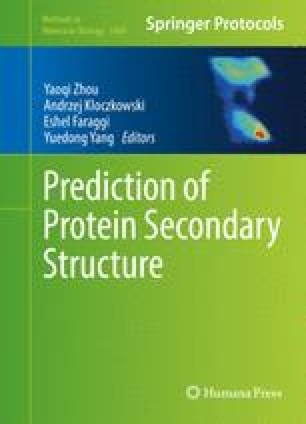
Although recent developments in structural biology ( 1– 4) have led to an acceleration in the rate of three-dimensional structure determination by X-ray crystallography, nuclear magnetic resonance and 3D-EM techniques, in January 2015 there were still just 105 732 protein structures known ( ) ( 5) compared to almost 90 million sequences ( ) ( 6). Knowledge of a protein's three-dimensional structure is central to understanding the protein's detailed function. Finally, the help-pages have been updated and tool-tips added as well as step-by-step tutorials. Predictions are now presented in SVG format with options to view full multiple sequence alignments with and without gaps and insertions.

Reporting of results is enhanced both on the website and through the optional email summaries and batch submission results. JPred4 features higher accuracy, with a blind three-state (α-helix, β-strand and coil) secondary structure prediction accuracy of 82.0% while solvent accessibility prediction accuracy has been raised to 90% for residues <5% accessible. The JPred4 web server has been re-implemented in the Bootstrap framework and JavaScript to improve its design, usability and accessibility from mobile devices. The JPred service runs up to 94 000 jobs per month and has carried out over 1.5 million predictions in total for users in 179 countries. In addition to protein secondary structure, JPred also makes predictions of solvent accessibility and coiled-coil regions. Rosetta homology modeling and ab initio fragment assembly with Ginzu domain predictionĬombination of ab initio folding and homology methodsĭetection of templates, alignment, modeling incl.JPred4 ( ) is the latest version of the popular JPred protein secondary structure prediction server which provides predictions by the JNet algorithm, one of the most accurate methods for secondary structure prediction. Proprietary platform, supported on Windows, Linux and Mac excluded ligand volumes), loop modelling, rotamer libraries for sidechain conformations, relaxation using MM forcefields. Template identification, use of multiple templates and accounting for other environments (e.g. Standalone program mainly in Fortran and Perl Satisfaction of contact and distance restraints Standalone program mainly in Fortran and Python Webserver with job manager, automatically updated fold library, genome searching and other facilities Remote template detection, alignment, 3D modeling, multi-templates, ab initio Template detection, alignment, 3D modeling Wraps external programs into automated workflowīLAST search, T-Coffee alignment, and MODELLER construction Remote homology detection, protein 3D modeling, binding site predictionĪutomated webserver and Downloadable program

A unified interface for: Tertiary structure prediction/3D modelling, 3D model quality assessment, Intrinsic disorder prediction, Domain prediction, Prediction of protein-ligand binding residuesĪutomated webserver and some downloadable programs


 0 kommentar(er)
0 kommentar(er)
